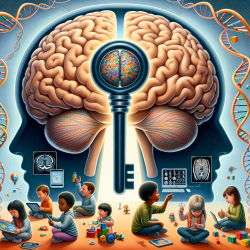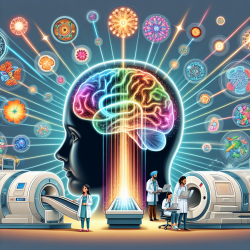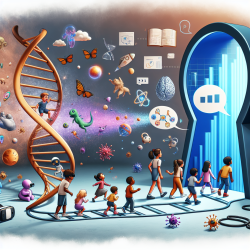Understanding Autism through MRI and Epigenetics
Recent research titled "Integration of structural MRI and epigenetic analyses hint at linked cellular defects of the subventricular zone and insular cortex in autism: Findings from a case study" has provided new insights into the neurodevelopmental underpinnings of Autism Spectrum Disorder (ASD). This study, combining structural MRI and epigenetic analyses, suggests potential cellular defects in the subventricular zone (SVZ) and insular cortex that could be pivotal in understanding ASD.
Key Findings and Implications
The study utilized advanced imaging techniques and epigenetic profiling to explore differences in brain structure and gene expression between individuals with ASD and neurotypical controls. Key findings include:
- Decreased Tractography Pathways: MRI revealed decreased long-range tractography pathways from the insular cortex in ASD cases, suggesting altered neural connectivity.
- Increased Proliferating Cells: FACS-based cell sorting showed an increased population of proliferating cells in the SVZ of ASD cases, indicating potential disruptions in neurogenesis.
- Epigenetic Alterations: DNA methylation analyses identified 19 genes with significant differential methylation, some of which have not been previously associated with ASD.
Practical Applications for Practitioners
For practitioners, these findings highlight the importance of considering both structural and genetic factors when assessing and developing interventions for children with ASD. The integration of MRI and epigenetic data can enhance our understanding of the biological basis of ASD, potentially leading to more targeted and effective therapeutic strategies.
Practitioners are encouraged to:
- Incorporate knowledge of neurodevelopmental pathways in therapy plans.
- Stay informed about emerging research in neuroimaging and genetics to enhance intervention strategies.
- Consider collaborations with neuroscientists and geneticists to deepen understanding and improve outcomes.
Encouraging Further Research
While this study provides valuable insights, it also underscores the need for further research to explore the complex interactions between genetic, epigenetic, and environmental factors in ASD. Future studies could expand on these findings by examining larger cohorts and exploring the impact of therapeutic interventions on these biological markers.
To read the original research paper, please follow this link: Integration of structural MRI and epigenetic analyses hint at linked cellular defects of the subventricular zone and insular cortex in autism: Findings from a case study.










